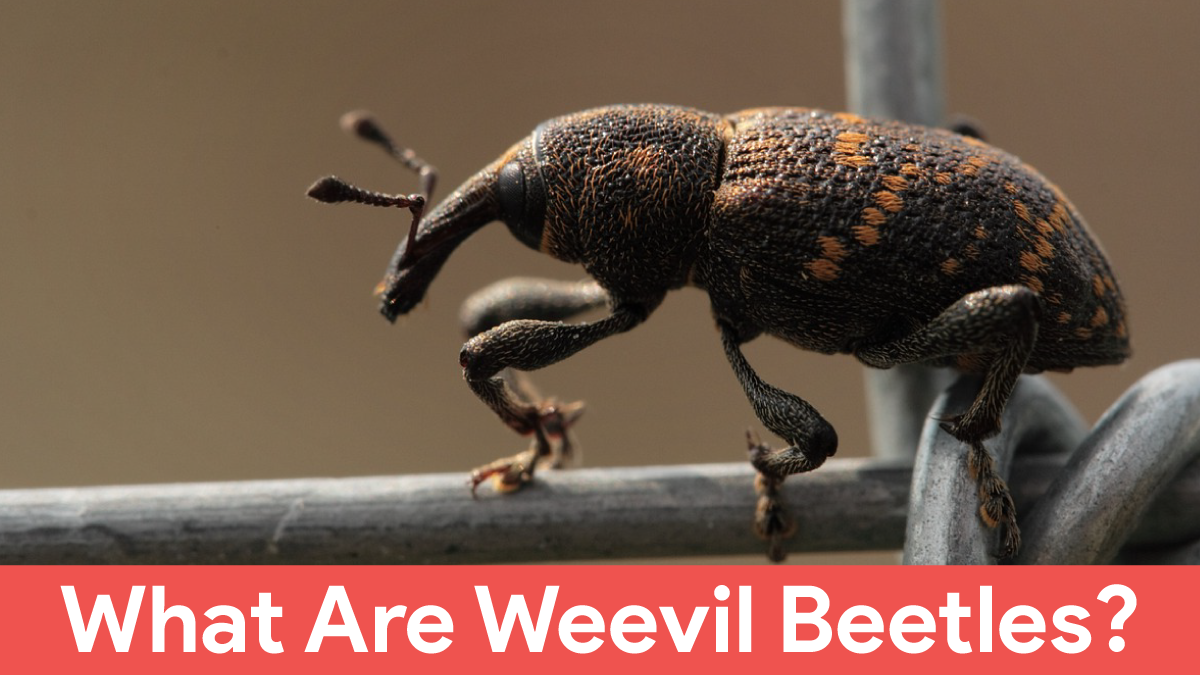Have you ever encountered a tiny beetle with the colour and pattern of its exoskeleton that can vary depending on the species? In this article, we will discuss what are Weevil beetles, their types, habitats and characteristics.
Table of Contents
What are Weevil beetles?
Weevil beetles are a type of insect belonging to the family Curculionidae, the most prominent family of beetles. They have a long snout and a curved body shape.
The lifespan of weevil beetles varies depending on the species, but most adults live for several months. They feed on various plant materials, including leaves, fruits, seeds, and roots.
Types of Weevil Beetles
There are many types of weevil beetles, with over 60,000 species described worldwide. Some common types include:
- Grain weevils: These tiny, reddish-brown bugs are notorious for taking over stored grains like wheat, rice, and corn.
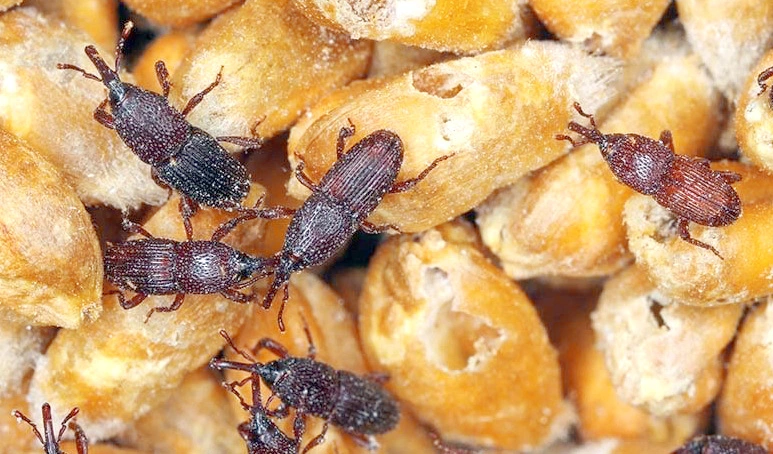
- Rice weevils: These little, reddish-brown bugs are notorious for getting into stored grains like rice.
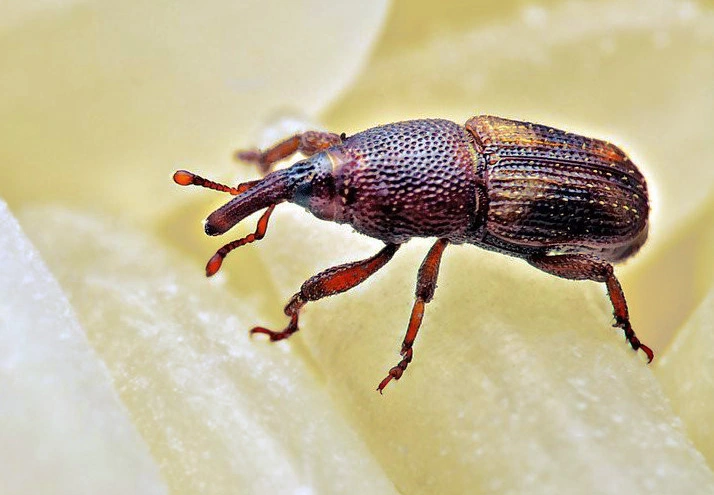
- Black vine weevils: These blackish-brown beetles feed on the foliage of ornamental plants, especially rhododendrons and yews.
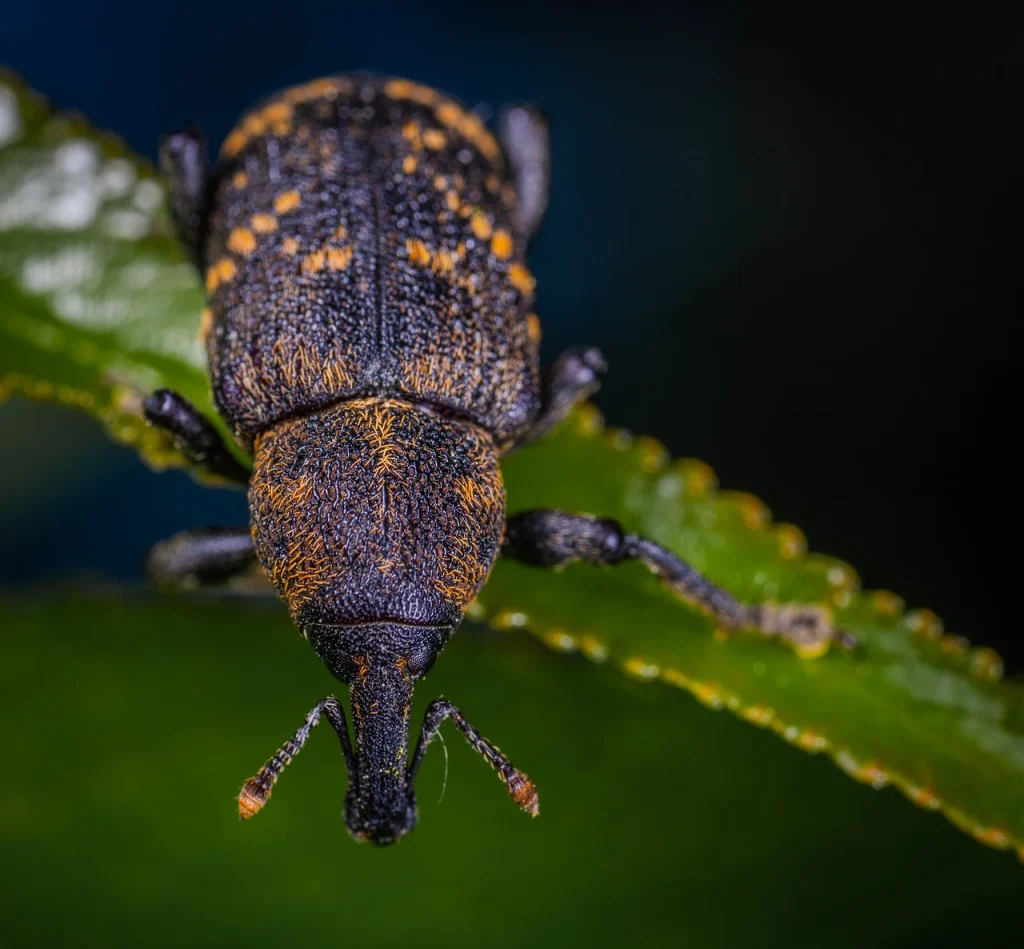
- Strawberry root weevils: These small, brownish-black beetles feed roots and crowns of strawberry plants.
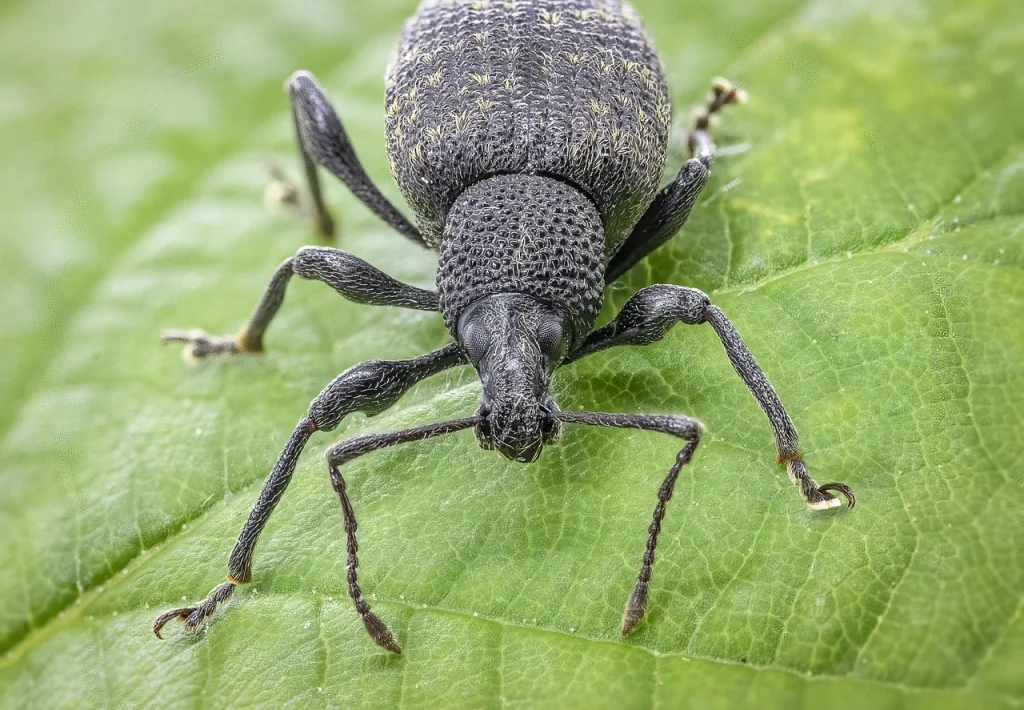
- Elm leaf beetles: These tiny, light green-yellow bugs are known for stripping elm trees of their leaves.
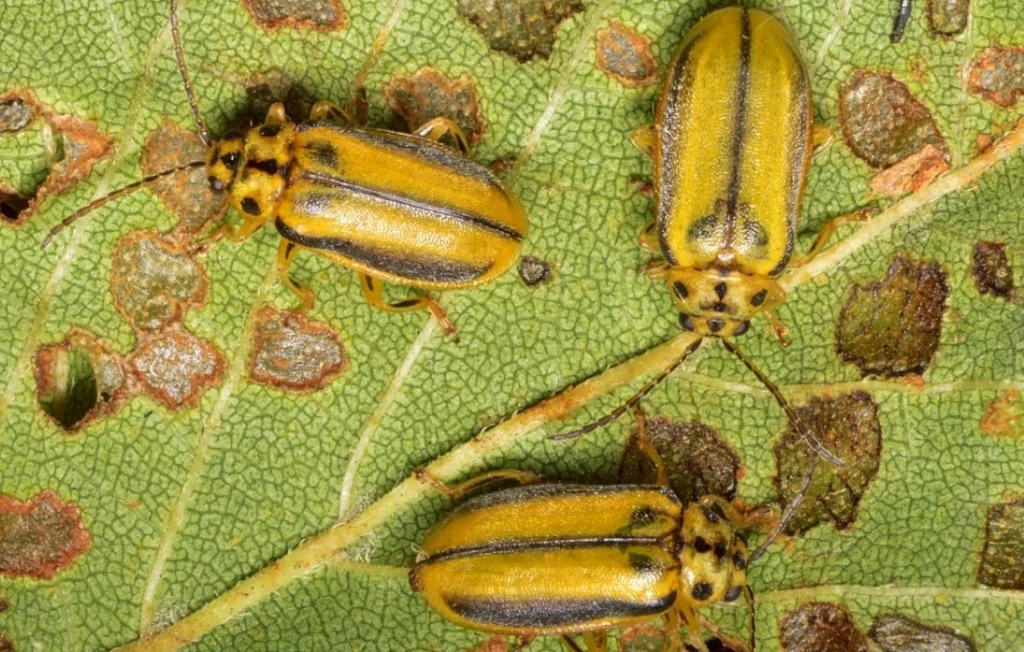
- Cotton boll weevils: These small, dark-coloured beetles feed on cotton bolls and can cause significant damage to cotton crops.
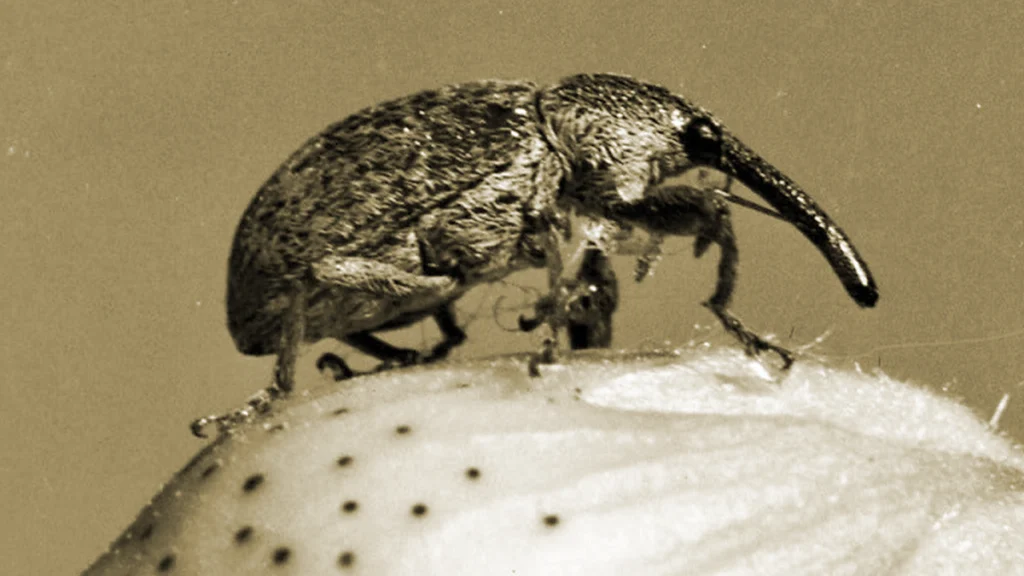
- The Snout beetle: These have a long snout and a small body. We know they are for damaging fruits and vegetables.
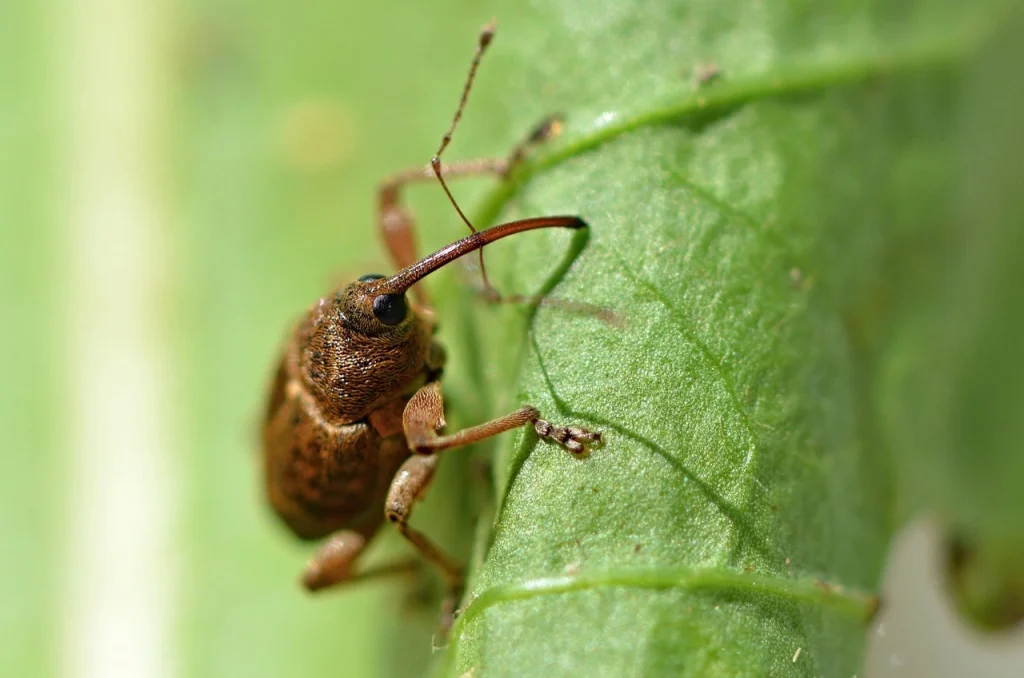
- The Acorn weevil: we know these beetles for feeding on acorn nuts and other tree nuts.
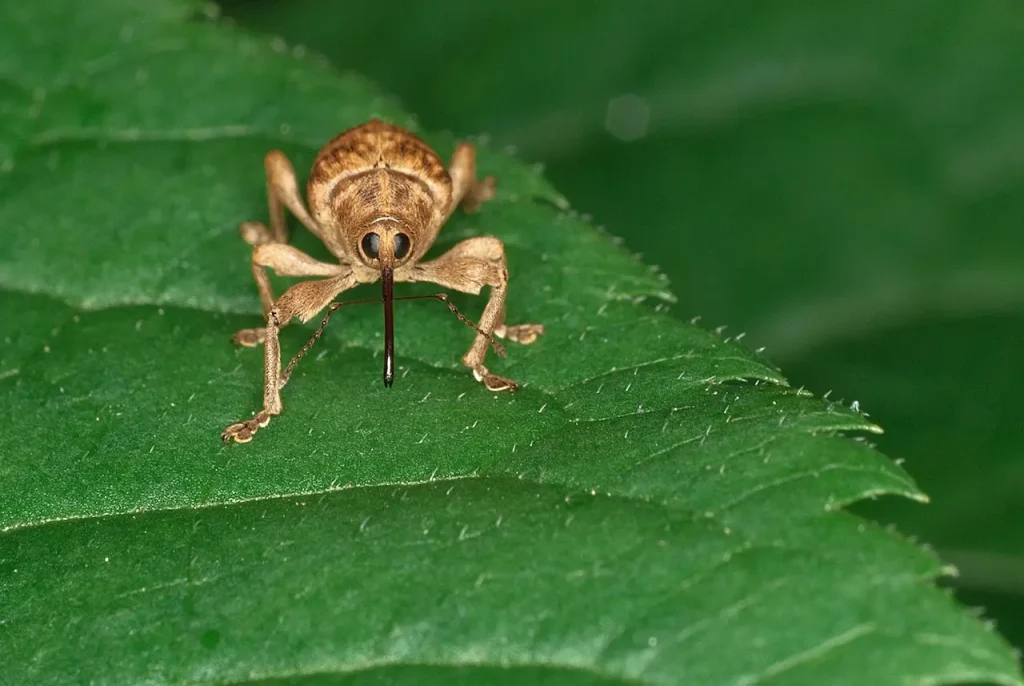
These are some examples of the many types of weevil beetles that exist. Each species has its unique characteristics and habits.
Characteristics of Weevil Beetles
Weevil beetles have several characteristics that are common among most species.
What does a weevil beetle look like?
These include:
- Body shape: Weevil beetles have a distinct curved body shape, with a long snout that is often longer than the body.
- Size: Weevil beetles are usually small, ranging from a few millimetres to a few centimetres.
- Colour and pattern: The shade and pattern of weevil beetles’ exoskeleton can vary depending on the species, but many are dark-coloured. Some species may have distinctive markings or marks on their exoskeleton.
- Antennae: Weevil beetles have long, thin antennae that are usually as long as or longer than their body.
- Legs: Weevil beetles have six typically short legs.
- Mouthparts: Weevil beetles have powerful jaws, which they use to chew on plants and other food sources.
- Habits: Weevil beetles feedlot materials, including leaves, fruits, seeds, and roots. They can also eat other insects, such as aphids and caterpillars. Some species infest stored grains and can cause significant damage to crops and stored food products.
There are over 60,000 different species, and each has unique traits.
Where do weevil beetles live
Depending on the species. Some typical habitats include:
- Forests: Many weevil beetles live in forested areas, where they feed on the foliage of trees and shrubs.
- Fields: Some weevil beetles, such as those that feed on crops, live in fields and agricultural areas.
- Weevils can appear in gardens and yards, such as those that eat your attractive plants.
- Inside homes: Weevils, like the ones that get into stored food, can turn up in people’s homes and other buildings.
- Wetlands: we find some weevils in swamps and other moist environments.
- Desert: we found some species of weevil regions where they feed on the roots and seeds of plants.
Lifecycle of Weevil beetle
The lifecycle of a weevil beetle typically comprises four stages: egg, larva, pupa, and adult.
- Egg stage: Female weevils lay their eggs near food sources, like the leaves, stems, or roots of plants, or on stored grains or other edibles. The eggs are usually small and oval-shaped and can be white, yellow, or reddish.
- Larva stage: After hatching from their eggs, the larvae (the immature form) of weevil beetles feed on their food source. They are usually white or cream-coloured with a worm-like shape. They typically moult several times during this stage, and at the end, they will enter the next stage.
- Pupa stage: After the larvae have finished feeding, they form a pupa, a non-feeding stage. Depending on the species and environmental conditions, they will stay in this stage for several days to several weeks. They will then enter the last stage.
- Adult stage: The final stage of the weevil beetle’s lifecycle is the adult stage. Adult weevils emerge from the pupal stage. They have a distinctive curved body shape, with a long snout often longer than the body. They will mate and reproduce, starting the cycle again.
What do weevil beetles eat?
They can also eat other insects, such as aphids and caterpillars. We found weevil beetles worldwide, and they can live in many habitats, including forests, fields, gardens, and even inside homes.
Can weevils fly?
Weevils fly for short, short, or long distances or in different weather. Weevils prefer the ability to fly as it allows them to move to new food sources, find mates, and disperse to new habitats.
Do weevil beetles bite?
Weevil beetles do not bite humans. They have mouthparts adapted for chewing and biting into plants, fruits, seeds, and other food sources.
The long snouts chew on food, and the jaws grasp and hold it. They do not have the mouthparts or tendency to bite us.
Are weevil bugs harmful?
You can think of weevils as nuisances when they infest stored food products or eat plants in a garden or field. They pose no harm to humans and do not transmit diseases.
Do weevils spread fast?
Some weevils can reproduce quickly and produce multiple generations yearly, spiking population size. Weevils that infest food products can reproduce and lay eggs inside food, allowing their populations to overgrow.
Other species of e a slower reproduction rate, and their population growth is more gradual. Weevils that feed on gardens or fields may only produce one generation per year. They are slower than the ones with stashed grub.
What smells deter weevils?
Certain smells can deter weevils and help to prevent infestations. Some natural repellents include:
- Bay leaves: Weevils dislike the pungent aroma of bay leaves, so placing fresh or dried bay leaves in pantry items or places where weevils can help repel them.
- Cloves: Weevils are also said to dislike the pungent aroma of cloves, so cloves, It’s used in the same way as bay leaves.
- Peppermint: Peppermint oil or dried peppermint leaves can also repel weevils.
- Cedar: Weevils are also said to dislike the smell of cedar, so using cedar chips or cedar oil can help to deter them.
- Lemon: Weevils dislike the scent of lemon, so lemon oil or fresh lemon peel can help repel them.
Final Words
Now we know what are weevil beetles? How they are not dangerous to humans. If you spot them in your house, just do not panic because they cannot harm you, but they can scare you.
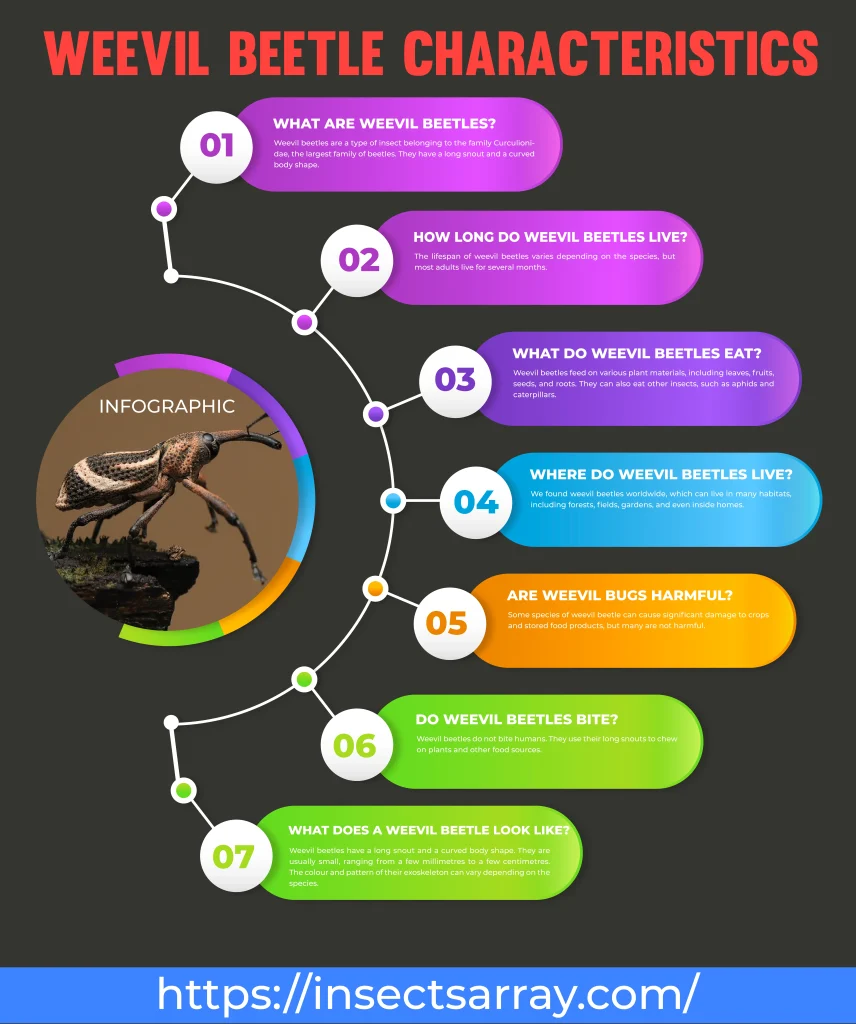
Related Articles
What Is A Rove Beetle? Complete Guide About Rove Beetles
What is Ground Beetle? Everything You Need to Know.
